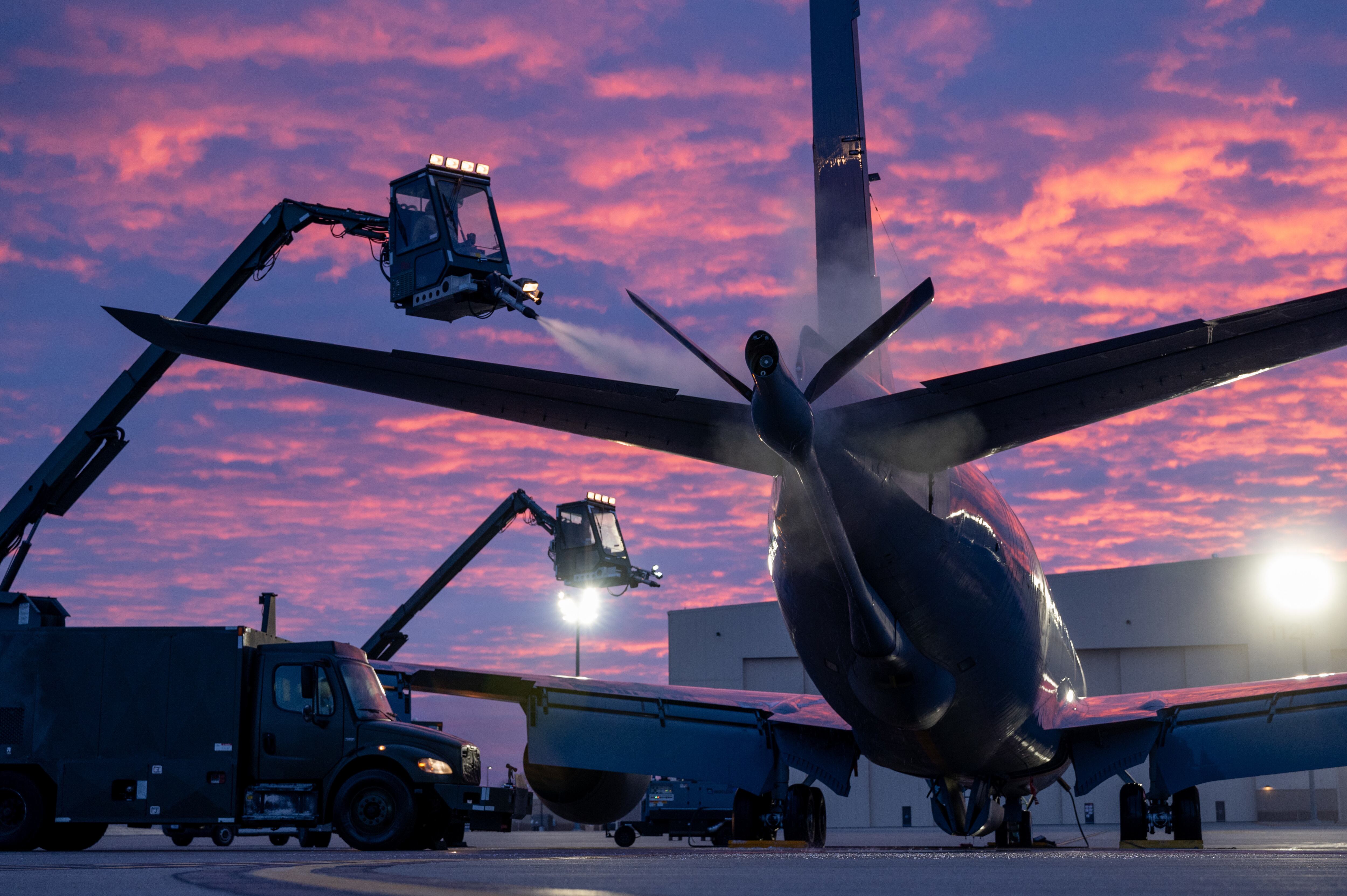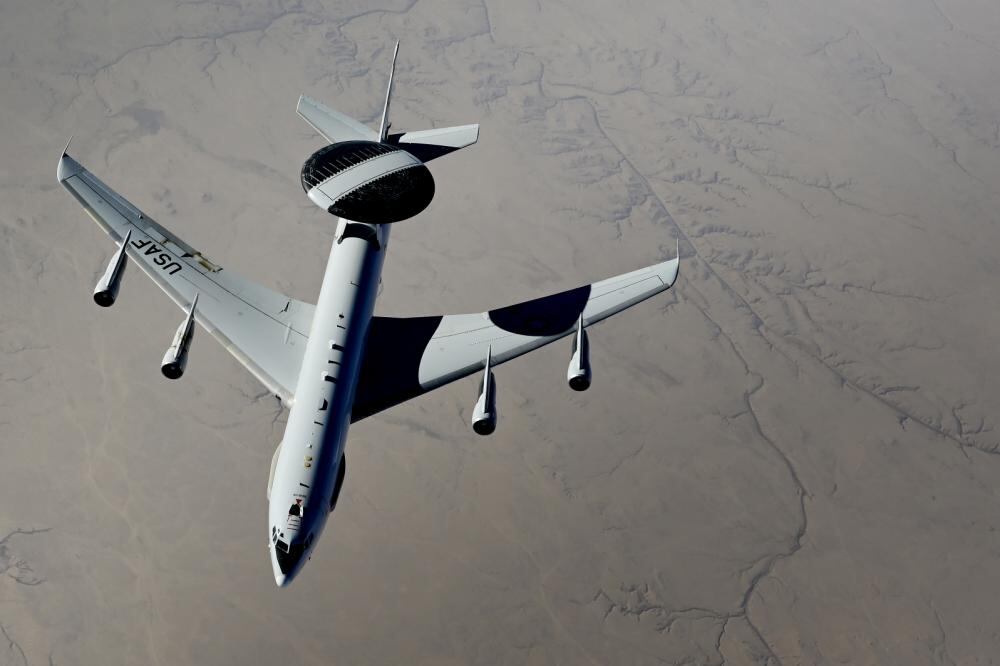This story was updated March 3 to include new information from NATO and Air Combat Command.
The big search for a tiny component that could cause an airplane’s tail to fall off has uncovered the problem on at least two dozen Air Force jets across at least five aircraft fleets. But the Air Force won’t say exactly how many planes have turned up with potentially dangerous parts.
The E-3 Sentry aerial target tracking planes on Wednesday became the latest to undergo inspection for subpar tail pins, the service’s Air Combat Command confirmed Thursday.
All E-3s in the field were inspected, Air Force spokesperson Capt. Laura Hayden said in an email. Most have returned to regular operations. The Air Force declined to answer how many Sentries needed replacement parts but said enough Sentries have been cleared to meet its daily needs.
“The only aircraft requiring inspection are in depot maintenance and will be inspected before leaving the depot facility,” Hayden said. “No mishaps have occurred in the E-3 … as a result of non-conforming pins.”
RELATED

Airborne warning and control system planes are known for their enormous radar domes that track objects moving through nearby airspace. The fleet is spread across Tinker Air Force Base, Oklahoma; Joint Base Elmendorf-Richardson, Alaska; and Kadena Air Base, Japan.
E-3s use a modified Boeing 707 fuselage that is similar to the Air Force’s C-135 family of jets. The service plans to shrink the 1970s-era AWACS fleet from 29 to 16 this year in preparation for the newer E-7 Wedgetail.
NATO owns more than a dozen E-3s as well. The transatlantic air coalition said Friday it is checking its planes after the U.S. alerted all AWACS users, who also include the United Kingdom, France, Saudi Arabia and Japan, to the issue.
RELATED

At issue are the “vertical terminal fitting pins” that help attach an aircraft’s tail fin — its “vertical stabilizer” — to the rest of the fuselage. The tail gives pilots control over a plane while turning.
Maintainers have checked hundreds of aircraft for substandard pins over the past three weeks. Airmen are done inspecting the KC-135 Stratotanker aerial refueling fleet and are replacing bad pins as needed, service spokesperson Brian Brackens said Wednesday.
As of Feb. 14, 24 of the 90 KC-135s that were inspected had noncompliant pins, Air Force Times previously reported. Planes with the proper parts are then cleared to fly.
Brackens declined to answer how many aircraft need new pins in total, citing operational security.
“The fleet continues to meet operational requirements supporting missions around the globe, which is a testament to the skill, speed and professionalism of our maintenance crews, engineers and logisticians in identifying and addressing the issue and preventing any potential mishaps,” he said.
Work has also finished for three other potentially affected fleets — the RC-135 family of reconnaissance planes, the WC-135 Constant Phoenix radiation‐sensing jet, and their TC-135 training variants.
Hayden said the only planes in those fleets that were found with noncompliant hardware were in depot maintenance. Their pins will be swapped out before they leave the facility.
The service owns about 360 KC-135s, plus around three dozen RC-135 and WC-135 variants that are based on the same Boeing-built fuselage. The Stratotanker fleet entered service in 1956, followed by the RC-135s in 1964 and the WC-135s in 1965.
The Air Force is in the process of retiring its KC-135s to make way for the new KC-46 Pegasus tankers. Stratotankers are based at 10 active duty military bases and nearly two dozen Air Force Reserve and Air National Guard installations around the world.
The RC-135 and WC-135 fleets are headquartered at Offutt AFB, Nebraska.
Each plane has four pins, two on each side of the vertical stabilizer, that are replaced during every round of heavy maintenance.
A leaked memo that was posted to the unofficial “Air Force amn/nco/snco” Facebook page Feb. 9 noted the pins may have been installed during planned depot maintenance between June 2020 and December 2022. The Air Force confirmed the memo’s authenticity to Defense News.
Metallurgical analysis conducted on two nonconforming pins in January found several discrepancies. They were too small, made of the wrong material, and had insufficient plating, the memo said.
If even one were to fail in flight, the results would be catastrophic, the Air Force said.
“Should one pin fail, the other would not be able to carry the remaining load and the vertical stabilizer would depart the aircraft,” the memo said.
Defense News air warfare reporter Stephen Losey contributed to this story.
Rachel Cohen is the editor of Air Force Times. She joined the publication as its senior reporter in March 2021. Her work has appeared in the Washington Post, the Frederick News-Post (Md.), Air and Space Forces Magazine, Inside Defense, Inside Health Policy and elsewhere.





